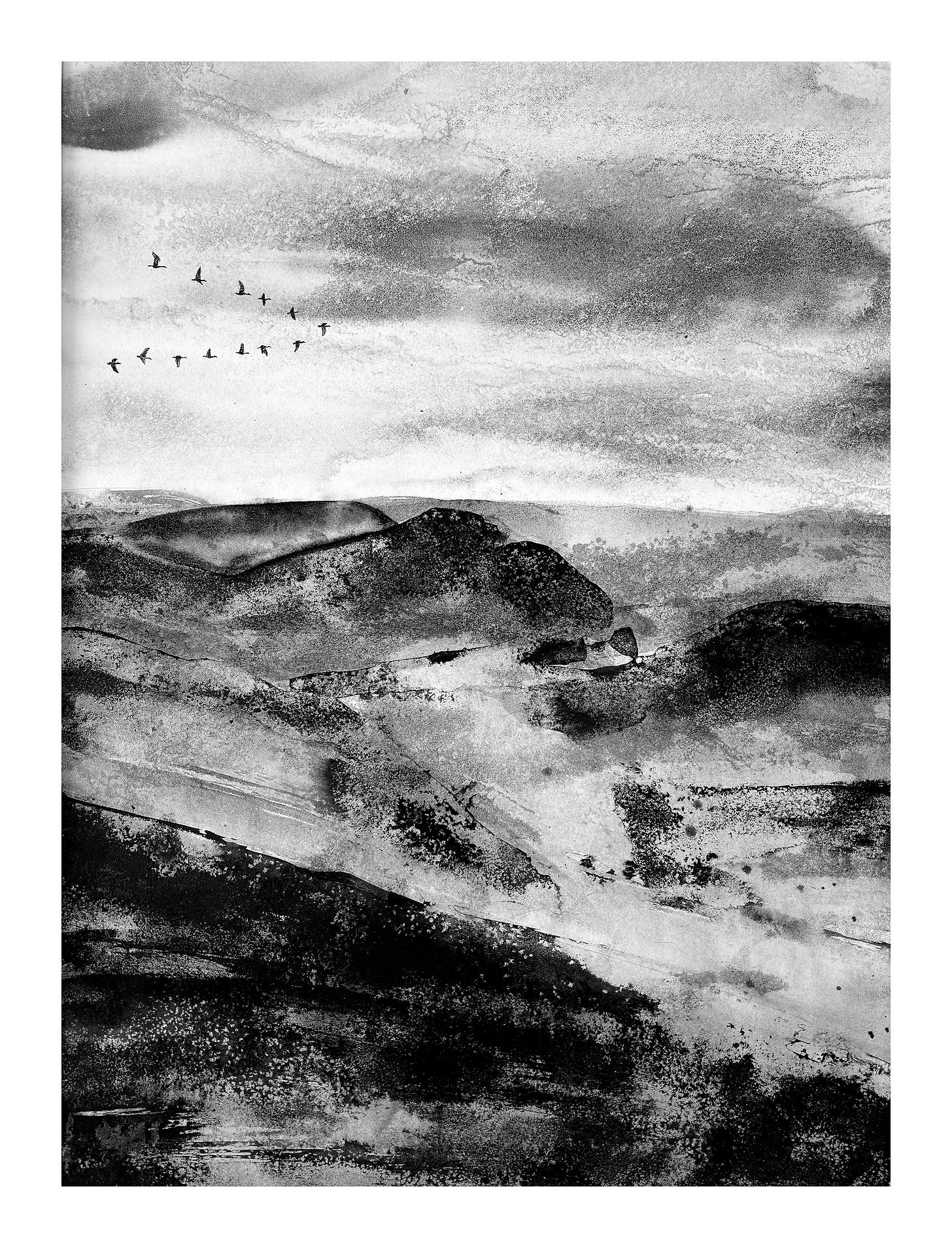Dear Friends,
I’ve been working on this story for a few months. It’s a little longer than my usual offerings here. It’s about my square mile, which can be seen in the painting above, the only landscape piece I’ve done of the area. If you’re a local (and almost all of you aren’t) you might recognise the view from Bradnor Hill above Kington, looking across to Hergest Ridge and the Welsh mountains beyond. If you’re not a local, and if you’re ever in the area, I recommend a visit. The story is also about transformation, a subject which seems to be on the curriculum right now, as the rotation of spin of our culture seems to have sped up of late.
Hope you enjoy the piece, and the two paintings.
J
I’m sitting at my desk watching the wind tussle a tangle of ivy which is attached to the wall of the ancient coaching inn opposite our house. Leaves shivering, seed heads bobbing like fishing floats, the last seeds still waiting to be picked by the fat pigeon which sometimes arrives, when all its other foragings have failed. Beyond are the stone and timber houses of Kington, roofs at every angle, a precarity of chimneys, tv aerials listening-in to the world’s worst conversations. Every window is dark. People are shuffling down the high street, shopping for groceries. They carry cardboard coffee cups, cigarettes and vapes, sagging plastic bags. Some stop to chat, talking about the arctic wind, the snow which might arrive later. The butcher serves his queue of customers who shuffle towards him across a sawdust floor. His white apron is a little bloody, the chopping block behind him still dripping pink from mounds of diced beef, perfectly arranged pyramids of gore. Hairdressers snip, heads tilted in utter concentration. The man in the carpet shop, the most deserted of stores, stares out at the street, tragically lonesome, as a knot of traffic follows a slow-moving bus and the pedestrians on the too-narrow pavements step back nervously. It’s a narrow place. The buildings are too high and they lean over the pavements like reapers. Some say this place has been left behind, that it needs an injection of energy. They’re thinking commerce I suppose.
On my windowsill, crowding out the view across the town is a collection of objects I’ve gathered over the decades. Probably once a month I rearrange them, make little changes. There’s a clay figure of an owl which we bought home from our honeymoon in Africa, a silver teapot my wife inherited from her grandmother, paint brushes, dried up pens, a picture frame containing a skeleton lotus leaf that someone sent to me from India. There are many interesting stones (our house is full of them), a few fossils. In the centre of the sill is a red begonia plant that I bought when we moved here. It has heart shaped copper-crimson leaves with stars in their centres, tiny hairs covering the stems. Miraculously, given my gift for houseplant neglect, it’s just come into flower. The bowed stalks are tipped with slender branches, each with a pair of miniature leaflets. The flowers are translucent and frosty with stamens the colour of buttercups. Every day a flower drops, leaving behind a question mark. Was that it? Where are we going now? Things that change slowly, or quickly. Things that change endlessly.
And things seem to be changing rapidly now - our society, the world, the weather. There’s a threat in the air which hasn’t been present in my lifetime. You can sense it in the town which has resisted transformation longer than most, content with its delapidation, still connected, somehow, to the ground around it. But you can still hear the voices in the distant centres of power. Break it all, they’re saying, scatter it, throw it away.
Keep reading with a 7-day free trial
Subscribe to Into the Deep Woods to keep reading this post and get 7 days of free access to the full post archives.



